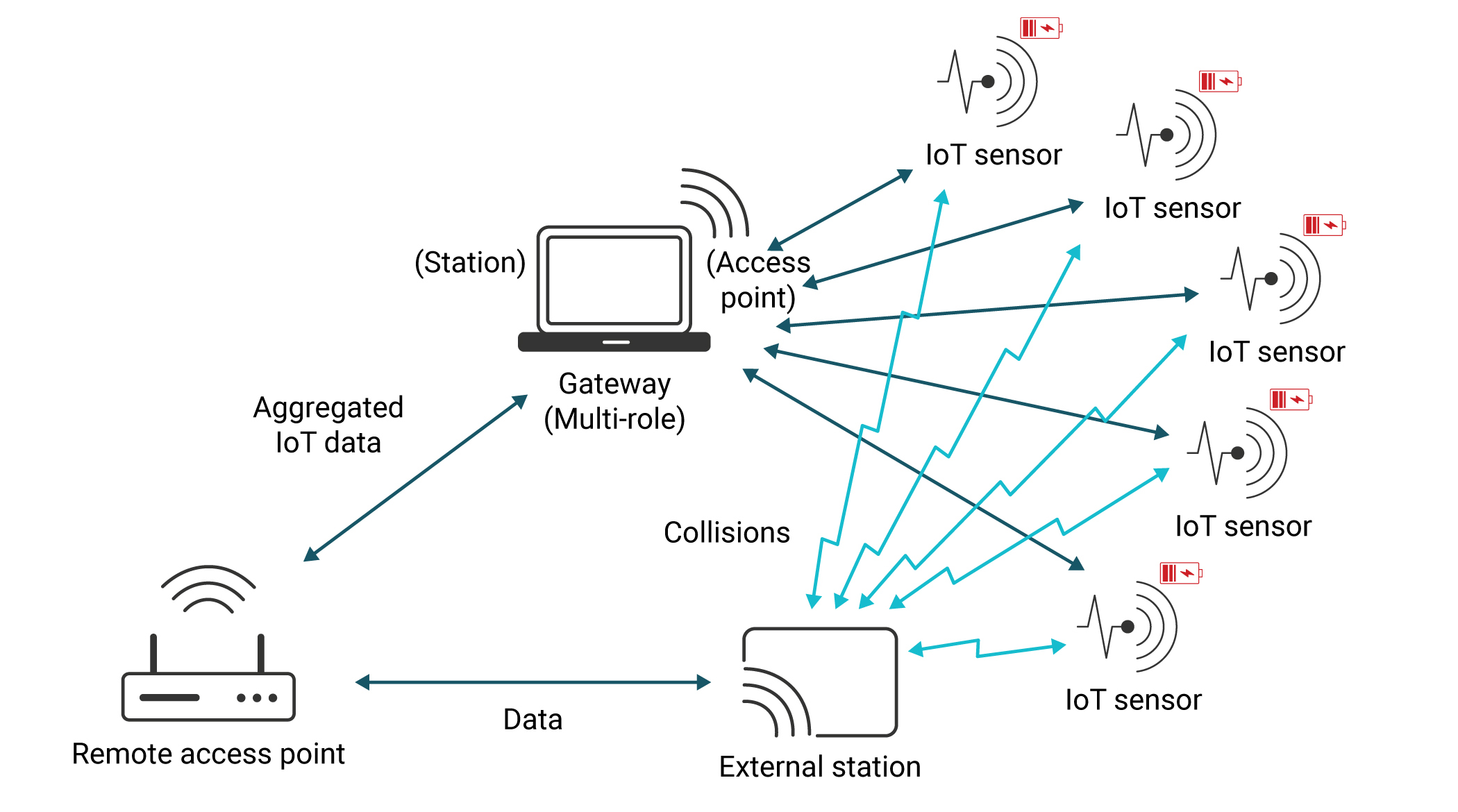-
Advantages and Challenges of Multi-RoleMulti-Channel versus Single-Channel
Advantages and Challenges of Multi-RoleMulti-Channel versus Single-Channel
Trademarks
Wi-Fi is a trademark of Wi-Fi Alliance.
WiLink, WL18xx, and AM335x are trademarks of Texas Instruments.
Bluetooth is a registered trademark of Bluetooth SIG.
All trademarks are the property of their respective owners.
Acronyms
| ACK | Acknowledgment |
| AP | Access Point |
| BT | Bluetooth |
| BW | Bandwidth |
| CH | Channel |
| CL | Client |
| DUT | Device Under Test |
| DTIM | Delivery Traffic Indication Message |
| GO | Group Owner |
| MIMO | Multiple Input Multiple Output |
| MRSC | Multi Role Single Channel |
| MRMC | Multi Role Multi Channel |
| P2P | Peer to Peer |
| PS | Power Save |
| SISO | Single Input Single Output |
| STA | Station |
| SP | Service Period |
| WLAN | Wireless Local Area Network |
1 Introduction
Legacy WLAN implementations assume a single WLAN role operation (station, access point or any other WLAN role). Multi Role means that several WLAN roles (two or more) are operating concurrently, on the same or even different channels and/or bands.
A typical example for Multi Role can be a gateway device where one role is a WLAN station connected to home access point which provides the access to the internet, and the other role is a WLAN access point connected to one or more sensors scattered around the house. In such a system a user can access the gateway device to easily monitor and control each one of the sensors instead of accessing one by one.
 Figure 1-1 Multi Role Example
Figure 1-1 Multi Role ExampleOne approach is to implement concurrency using two or more completely separate radio systems (for example, one per each role). This fits the high-end, highest-performance, and most expensive solution.
On the other hand, for more cost-effective solutions – a single radio system (for example, radio and SW controller) manages transitions between multiple roles. With the single radio approach, the concurrency can be implemented using time-division sharing of system resources and thus achieve a more cost-effective solution. In such single radio solutions, the Multi Role implementation can be limited to operate all roles on the same physical channel (“Single-Channel” Multi Role) or allow the different roles to operate on different channels (“Multi-Channel” Multi Role).
This paper presents the multi-channel approach advantages over a single-channel approach of such multi-role solutions from an overall system performance point-of-view. This paper also discusses the challenges of achieving a cost-effective multi-role multi-channel solution with a single radio, and describes the different solutions that ensure a stable, high performing and reliable system as implemented in TI WL18xx™.
2 Single-Channel Versus Multi-Channel
As mentioned, a Multi Role solution implements several WLAN roles operating concurrently. There are different multi role types and each one has different properties: The single channel type limiting the WLAN roles to operate on same band and channel (for example AP and STA operating on channel 1 on the 2.4-GHz band). The multi-channel type, on the other hand, can avoid this by allowing the WLAN roles to operate on different channels and even bands.
Another aspect is the amount of radios used for the multi-role solution. The multiple radios solution can achieve full concurrency where each WLAN role gets its own resources and full radio access. The single radio solution can achieve similar system efficiency and performance by dividing the radio access and resources in a managed way and overcome some of the challenges.
2.1 MRSC Single Radio Network Topology
The following example will demonstrate the Multi-Role Single-Channel use case and how system efficiency is significantly impacted when roles are operating on same channel (and band): As can be seen in the Figure 2-1 below the traffic between the IoT STAs connected to the Multi-Role device Access Point overlaps and collides with the traffic running from the Remote Station to the Remote Access Point running on the same channel. Thus, overall system throughput is degraded. In addition, the system’s overall power consumption is higher as the amount of re-transmissions required from all the devices is higher.
 Figure 2-1 Multi-Role Single-Channel
Network Topology
Figure 2-1 Multi-Role Single-Channel
Network Topology